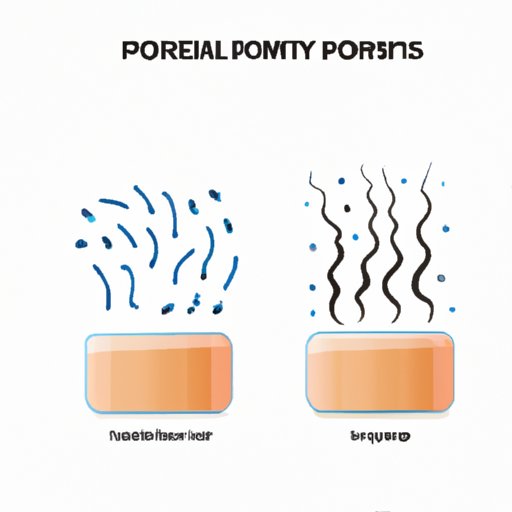Introduction
Hair porosity is a term used to describe the ability of your hair to absorb and retain moisture. It’s a measure of how well your hair can absorb and hold water, which can have an impact on the health and appearance of your hair. Understanding your hair porosity can help you create a personalized hair care routine that works best for you.

What You Should Know About Hair Porosity
When it comes to hair porosity, there are three main categories: low, medium, and high. Low porosity hair is resistant to absorbing moisture, meaning it takes longer for your hair to become saturated with water. Medium porosity hair is able to absorb and retain moisture more easily than low porosity hair. High porosity hair absorbs moisture quickly, but also loses moisture quickly.
Understanding your hair porosity is key to creating a personalized hair care routine that works best for you. Knowing your hair type can help you choose the right products and styling techniques. Here are some tips and tricks to help you identify your hair porosity:
A Comprehensive Guide to Hair Porosity
Identifying your hair porosity is the first step in understanding your hair and creating a hair care routine that will work best for you. Here are six ways to identify your hair porosity:
- Feel your hair when it’s wet. Low porosity hair will feel slippery and resistant to absorption, while high porosity hair will feel spongey and absorbent.
- Look at the cuticle layers of your hair. Low porosity hair has tightly packed cuticles, while high porosity hair has looser cuticles.
- Perform the “float test.” Put a strand of your hair in a bowl of water. If it sinks, you have low porosity hair; if it floats, you have high porosity hair.
- Test your hair’s elasticity. Pull a strand of your hair taut and release it. If it snaps back quickly, you have low porosity hair; if it takes longer to return to its original shape, you have high porosity hair.
- Observe how long it takes your hair to dry. Low porosity hair will take longer to dry, while high porosity hair will dry quickly.
- Pay attention to how your hair responds to products. Low porosity hair may be resistant to products, while high porosity hair may require more product to achieve desired results.
Once you’ve identified your hair porosity, you can begin to create a hair care routine that works best for you. Here are some best practices for managing hair porosity:
- Use gentle shampoo and conditioner. Choose sulfate-free formulas that won’t strip your hair of its natural oils.
- Deep condition regularly. Use a deep conditioning treatment once or twice a week to keep your hair moisturized and healthy.
- Avoid heat styling. Heat styling can damage your hair, so opt for air drying or using a diffuser instead.
- Protect your hair from the sun. Wear a hat or scarf to protect your hair from the sun’s damaging UV rays.
- Use natural oils. Natural oils like coconut oil, olive oil, and argan oil can help seal in moisture and keep your hair healthy.
Conclusion
In conclusion, understanding your hair porosity is essential for creating a hair care routine that works best for you. There are three main categories of hair porosity: low, medium, and high. You can identify your hair porosity by performing the float test, observing how quickly it dries, and paying attention to how it responds to products. Once you’ve identified your hair porosity, you can begin to create a hair care routine that works best for you, such as using gentle shampoo and conditioner, deep conditioning regularly, avoiding heat styling, protecting your hair from the sun, and using natural oils. With the right knowledge and practices, you can take better care of your hair and achieve beautiful, healthy results.


